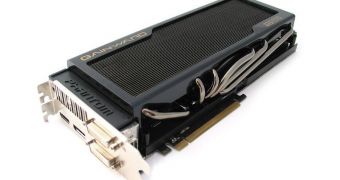Market research firms are always looking at how things turned out on the various IT market segments, and it seems the graphics add-in-board market had a fairly weak performance during 2010.
Considering all the video cards released over the course of last year, one might expect overall sales to have been strong, especially compared to the year 2009.
Since 2009 was still plagued by the backlash from the recession that was worst, according to many, in 2008.
That said, with both AMD and NVIDIA unleashing DirectX 11 graphics adapters throughout the past year, sales were expected to go well beyond what was managed.
Apparently, overall shipments actually failed to even match the 75.3 million of 2009, ending up at 72.8 million units.
Another surprise came in the from of the Q4 shipments, which failed to surpass those of the July-September period.
Overall, the yearly AIB (add-in-board) market only managed to increase compared to 2009, by 0.8%, (17.2 billion) thanks to a gradual rise in average selling prices (ASPs).
The major cause behind this downward trend in sales is the increasing adoption of processors and motherboards with integrated graphics, which drastically eroded the low-end GPU segment.
Meanwhile, with laptops and tablets stealing desktop market share, there simply aren't as many case-housed PCs to fuel video card sales.
Granted, workstations and high-end gaming machines with more than one video card did manage to offset the decline to some extent, but the end result was still disappointing.
As for market shares, NVIDIA secured 60.8% at the end of the last quarter of 2010 (up 3.6%) while AMD lost 5.2%, sliding to 38.8%.
Moving forward, Intel will keep promoting its Sandy Bridge chips with built-in graphics, as well as its successors, while AMD does the same with its Fusion APUs, like the Llano.
With that in mind, it is quite likely that the AIB market will only keep seeing lower shipments.

 14 DAY TRIAL //
14 DAY TRIAL //